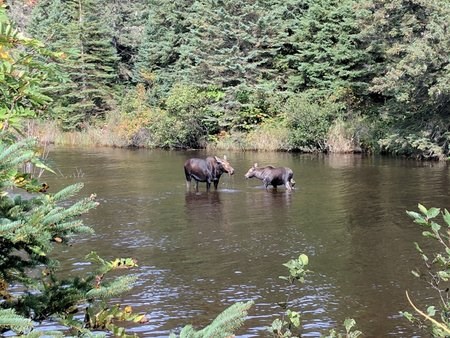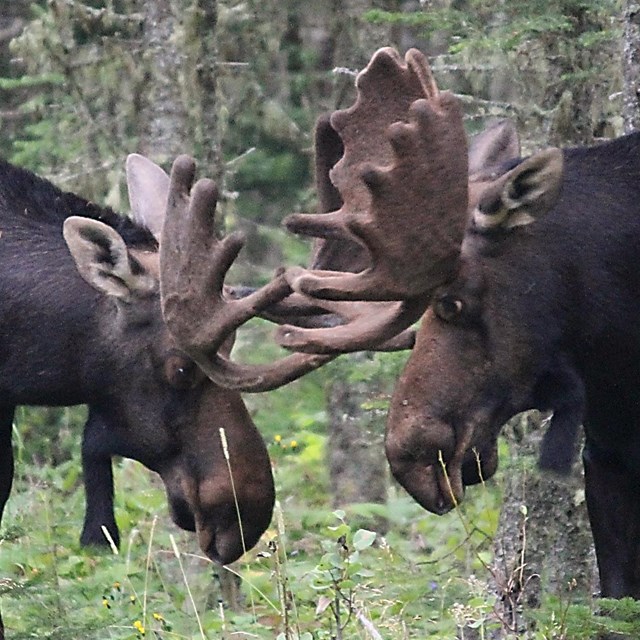
NPS Moose (Alces alces) first arrived on Isle Royale in the early 1900s. Since that time, moose have become one of the iconic mammals of Isle Royale National Park. CharacteristicsThe largest member of the deer family, the average moose stands at a height of over six-feet tall at the shoulder and weighs nearly 1,000 pounds, making them the largest animal on the island. Their large body mass and dark brown coat help them retain heat from the sun, and their long legs help them walk through deep snow. Such characteristics make moose well adapted to survive the cold island winters but makes the summer heat difficult to tolerate. Moose PopulationThe moose population of Isle Royale has fluctuated over the years. Since 1980, the population has been as low as 500 animals and as high as 2,400. The fluctuation of population is directly connected to the vegetation and predators of the island. Higher numbers of moose on the finite land mass lead to over-browsing of island vegetation, which leads to population decrease due to winter starvation. The only island moose predator is the gray wolf. The fluctuation of wolf numbers impact the overall moose population. 
NPS Wolf & Moose PopulationThe prey to predator relationship of Isle Royale's moose and wolves has a direct effect on both species' populations. Wolves help stabilize the moose herd by preying on the old, young, and ill, while strong moose numbers allow for stable winter hunting for the wolves. Check out the correlation between wolf and moose populations of Isle Royale since 1980. Where Are The Moose?Isle Royale moose can be found throughout the island. In the summer, it is common to see them feeding in inland lakes and beaver ponds. This helps them stay cool, plus they like to eat the aquatic plants that grow beneath the surface. If not in water, they tend to stay in the cool shaded forests and bogs, especially during the hottest parts of the day. They are most active during dawn and dusk.

NPS/Kelly Morrissey BreedingMale moose (bulls) are distinguishable from female moose (cows) by a flap of skin beneath the throat, called a bell. Males also grow large, wide antlers throughout the summer months, then shed the velvet covering by mid-September to be ready for mating season, or the rut. It continues through October, during which time bull moose use their antlers to fight each other and gain the right to breed with cows. Cows typically give birth to a single calf in late spring, although twins are fairly common in areas of good habitat. Safe Moose ViewingMoose are large and potentially dangerous animals. Here are some guidelines for safe viewing.
|
Last updated: October 14, 2020



